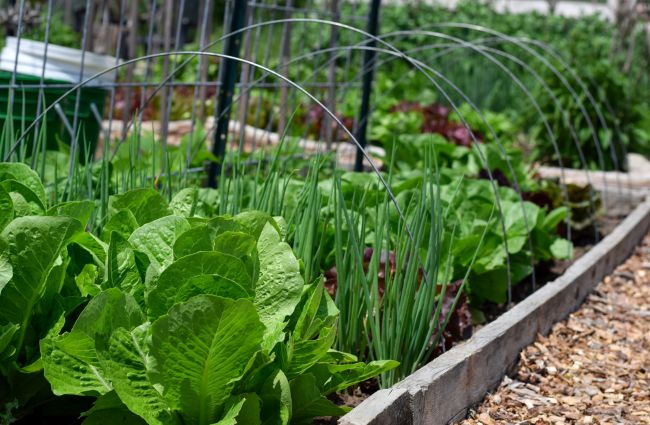Winter Garden Jobs: Keep Growing Even in the Cold

As the last of the autumn leaves fall and frost begins to settle on the ground, it’s tempting to hang up the gardening gloves until spring. But just because the weather turns colder doesn’t mean the garden has to go completely quiet. In fact, winter is the perfect time for essential tasks that lay the groundwork for a successful growing season ahead.
From preparing the soil and tidying up spent crops to sowing hardy vegetables and spring bulbs, there’s plenty that can still be done in winter. With a bit of planning and a few clever choices, you can keep your garden productive and active—even through the chill.
If you’re planning to sow hardy crops over the coming months, it’s worth stocking up early on vegetable seeds such as broad beans, onions, garlic and winter-hardy peas. These can be sown in late autumn or early winter and will quietly establish themselves, ready to burst into growth when the days lengthen again.
Clear, Clean and Compost
Before you consider what to grow, it’s important to take stock of your garden and prepare it for the colder months. Start by clearing away any remaining plant material from beds, borders, and containers. Old stems, fallen leaves and spent annuals can all harbour pests and diseases, so removing them helps to prevent problems later on.
This is also a great opportunity to turn the compost heap and add any healthy green waste. Don’t add diseased plant matter, but otherwise, most organic material can go into the heap to break down over winter.
Once the beds are cleared, give the soil a bit of attention. Adding well-rotted manure or compost helps improve structure and nutrient content. You could also consider applying a mulch to protect the surface from heavy rain and frost damage.
Sow Now, Harvest Later
Although winter isn’t typically seen as a planting season, there are still plenty of things that can go into the ground. Garlic cloves and overwintering onions are best planted before mid-winter so they have enough cold weather to develop properly. Broad beans can also be sown now and will establish strong root systems, giving you a head start come spring.
If you’ve missed the main bulb-planting window in autumn, don’t worry—tulip bulbs can still be planted into December in most parts of the UK. Just be sure the ground isn’t frozen or waterlogged, and they should perform well come spring.
Looking ahead to next season, now’s a good time to browse flower seeds and plan your displays. Many varieties, such as sweet peas and delphiniums, can be started indoors in trays or propagators from January, giving them a head start before being planted out in spring.
Maintain Tools and Infrastructure
With less day-to-day gardening to be done, winter is a great time to maintain the tools and structures you’ll need next year. Clean, sharpen and oil secateurs, shears and spades to prevent rust and keep them in good working order.
Check over raised beds, fencing, compost bins and greenhouses for signs of wear or damage. Wooden structures may need treatment to protect against damp, while glass panes can be washed to maximise light for any overwintering plants.
Water butts should also be checked—empty them if there’s a risk of freezing, or insulate them to protect from frost damage. Draining hoses and storing them indoors can also prevent splits and leaks in spring.
Grow Indoors or Under Cover
If you’re keen to keep growing throughout winter, a cold frame or unheated greenhouse opens up plenty of possibilities. Hardy leafy greens like winter spinach, rocket, mustard leaves and lamb’s lettuce can continue to grow in mild conditions, especially with a bit of protection.
Indoors, windowsills can be surprisingly productive. Herbs like chives, parsley and coriander will happily grow in pots with a bit of light and care. It’s a good way to keep fresh ingredients within reach and extend your growing season without braving the elements.
If you’ve got a heated propagator, you can even get a head start on seed sowing in the new year. Many slow-growing perennials or early crops like aubergines and peppers benefit from a long growing season, so starting early indoors makes sense.
Feed the Soil, Feed the Future
Winter is also the time to focus on soil health. After months of cropping, soil can become tired and depleted. Adding organic matter like compost, well-rotted manure or leaf mould gives the soil the nourishment it needs to recover and rebuild.
You might also consider sowing green manure, such as field beans or winter rye, if your beds are empty. These hardy plants grow through the colder months and can be dug in before spring planting to improve soil structure and fertility.
Testing your soil’s pH or nutrient levels at this time of year can also help you make informed decisions for next season. With a clearer picture of your garden’s condition, you can adjust fertilisers and amendments accordingly.
Planning Ahead
Finally, winter is the perfect time for reflection and planning. Think back over the past year—what grew well? What didn’t? What would you like to try differently next year?
Sketch out a rough planting plan, decide which seeds you need to order, and make a list of supplies to pick up before the busy spring season kicks off. Whether you’re a seasoned grower or just getting started, winter offers a valuable opportunity to step back, regroup and prepare.
While the garden may appear dormant in winter, it’s actually a season of quiet productivity. With a few well-timed tasks, thoughtful planting and a little indoor growing, your garden can continue to thrive—even when the weather says otherwise.


